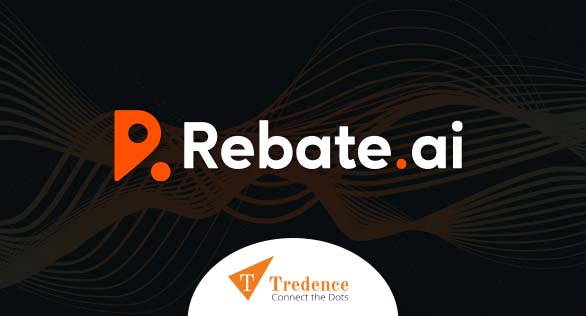
In his book, The Hard Thing About Hard Things, Ben Horowitz explains that there’s no recipe for starting a business from scratch, creating path-breaking differentiators or establishing a consistent competitive advantage. The hard thing about hard things is that no set formula exists for dealing with these parameters.
A similar situation has emerged in the case of chief data officers (CDOs). As data grows exponentially in volume, variety, and complexity, spurred on by technology-led innovations, CDOs are caught between two contrasting objectives:
1. Establishing, managing and governing a robust data foundation.
2. Leveraging data to generate business value.
I believe the 2008 global financial crisis underlined the need for a C-suite executive to manage, govern, own and account for enterprise data assets. This was someone with a harmonized understanding of the core business processes, products, customers, compliance, reporting and data infrastructure capabilities, including security — mandates we term as “defense” or “control” objectives.
Enter The CDO
Today, the CDO’s responsibilities have grown to include building a core set of capabilities to sense and respond to the hyper-dynamic business and technology ecosystems. This includes modernization, monetization and change management. We often term these mandates as “offense” or “growth” objectives.
Contrasting objectives and the natural course of evolution is taking the CDO role globally through a “lessons learned and scars earned” maturity journey. However, the multifaceted and amorphous scope of the role often leads to high turnover. An article (subscription required) published by Harvard Business Review succinctly argued that CDOs typically have multiple objectives, often with little consensus about their priority.
Many CDOs find it difficult to excel at everything they’re expected to do.
As mandates for the CDO evolve, this is the hard thing about hard things. It’s difficult for one person to gather the competency and experience spanning business process familiarity, technology thought leadership, architecture know-how, talent magnetism to build high-performance teams and drive change management to reap long-term benefits.
The Daily Grinds
Many companies underestimate the effort and collaboration required to derive value from data, while CDOs combat the following daily challenges across three discrete, interrelated dimensions: business, technology, people.
Business Challenges:
• Balancing enterprise and business unit goals for data as a service (DaaS).
• Complying with the demanding data/privacy regulations.
• Monitoring data management investments.
• Tying technology-business data strategies to deliver competitive advantages.
• Delivering positive incremental results.
Technology Challenges:
• Strategic technology modernization while remedying legacy systems’ complexity and limitations.
• Managing the data operations while provisioning business data demands.
• Defining and justifying investments in a future-ready technology roadmap.
• Bridging the agendas of the chief information officer (CIO) and chief technology officer (CTO) with a shared vision.
Organizational Challenges:
• Educating decision-makers about the CDO’s true role, value and challenges.
• Building trust and effectively resolving data ownership conflicts.
• Elevating data literacy and socializing data-led successes.
• Hiring and building multifaceted teams to drive the CDO change agent agenda.
Clearly defining what an organization expects of its CDO and then matching capabilities with those expectations is critical to longer, effective and sustainable CDO tenures. Here are five best practices to manage a CDO’s conflicting objectives.
1. The CDO Should Be A True C-Level Executive
Positioning CDOs as C-level executives is crucial. As data is supposedly “owned” by the business rather than IT, CDOs are often handicapped in the hierarchy, are made to report to other C-level executives and are branded purely as technology leaders.
The CDO should be empowered to positively influence the defense and offense play, consistently emphasizing data as a business priority. They should be equipped to drive business-IT key performance indicator (KPI) alignment via direct reporting to the CEO, subject to the organization’s context.
To build a case for this, CDOs must market themselves to the:
• Board: Build conviction through governance and growth value propositions and outline organizational preparedness for compliance.
• Functional Leadership: Educate them on how data and insights will enable business growth with sustained market differentiation and collaborate to drive data literacy.
• End-User Communities: Develop trust to convert them into advocacy groups that socialize success stories.
2. Business-Led Data-Driven Strategy
It’s time that the data strategy formulators (the CIO/CTO) bring in their CDOs to collaborate on a cross-functional charter that clearly defines priorities, measurement criteria and outcomes.
CDOs must understand investment synergies across short- and long-term initiatives. Business stakeholders think short-term gains, so CDOs must establish regular cadences about short-term achievements while drawing a clear road map for long-term initiatives toward the organization’s data-driven agenda. CDOs must draw rationally from both time-tested legacy technologies and modern technologies to ensure inclusivity and future readiness.
3. Be A Change Agent And Emphasize Data Literacy
As organizations prioritize technology over people, they underplay the importance of data literacy in driving business-IT collaboration. Significant efforts must be devoted to improving the data literacy index: organizations’ data, how to access it, data management and enrichment, data monetization, transparency, data-driven success stories, self-serve capabilities and data value delivery.
The CDO must reinforce the strategic importance of data across the organization, marketing in a way that establishes risk/reward engagement models with the business and technology functions.
4. Balancing Priorities: Data Management And Governance Vs. Data For Business Growth
Both data protection and democratization should be taken into account to ensure that neither the data infrastructure is overcomplicated nor does the business compromise on agility.
5. Manage Three Ps To Diffuse Territorial Issues
Priorities, projects and programs — the conflicting forces for CDOs — often result in a confusing array of initiatives without an overarching set of principles outlined by key stakeholders.
To focus the net force on growth, CDOs must build trust with business and IT communities by understanding and appreciating their pain points, demonstrating the willingness to arrive at a middle ground, facilitating open discussions on potential implications, and establishing the prioritization criteria without jeopardizing the organization’s overall data-driven agenda.
This article was originally published on Forbes.com

AUTHOR - FOLLOW
Soumendra Mohanty
Chief Strategy Officer & Chief Innovation Officer
Topic Tags




